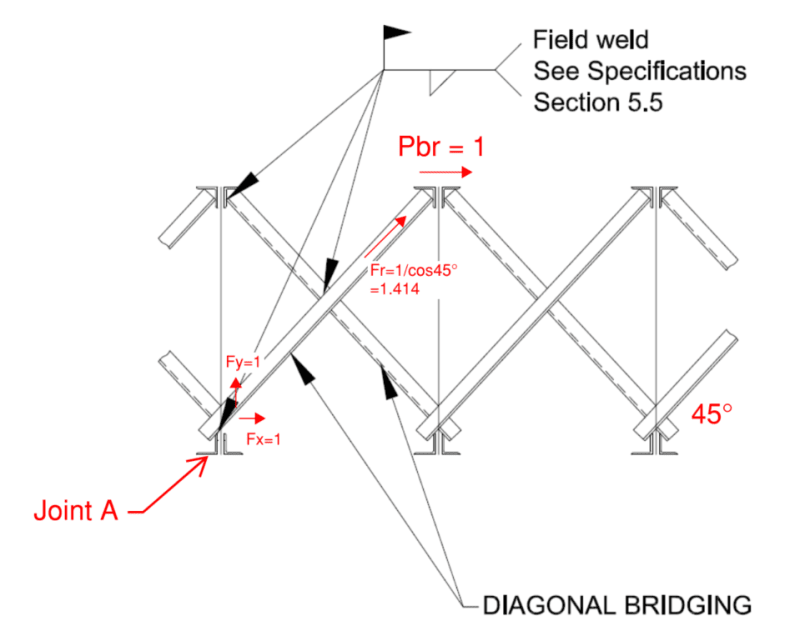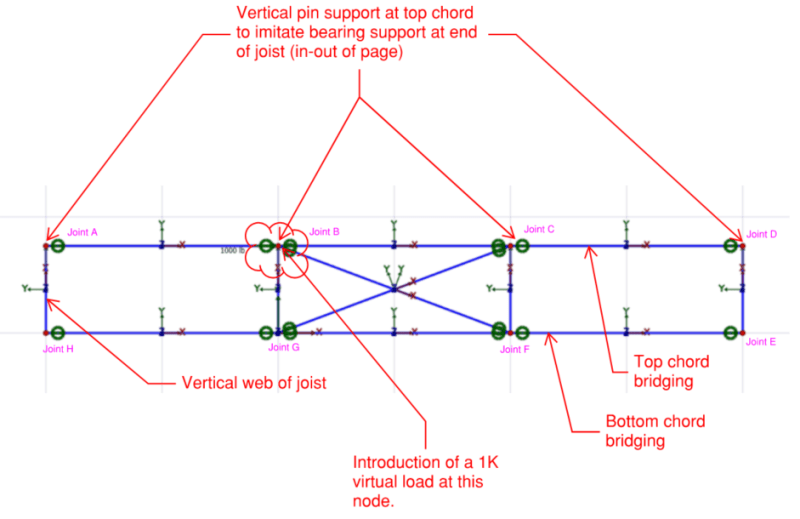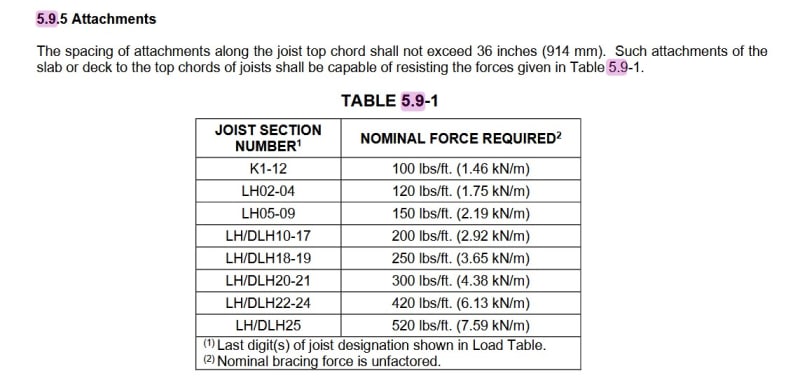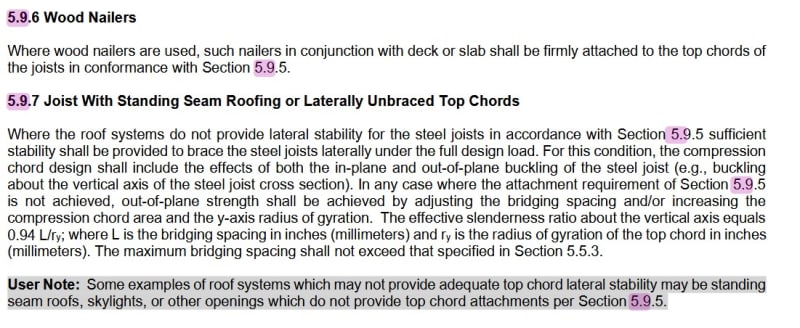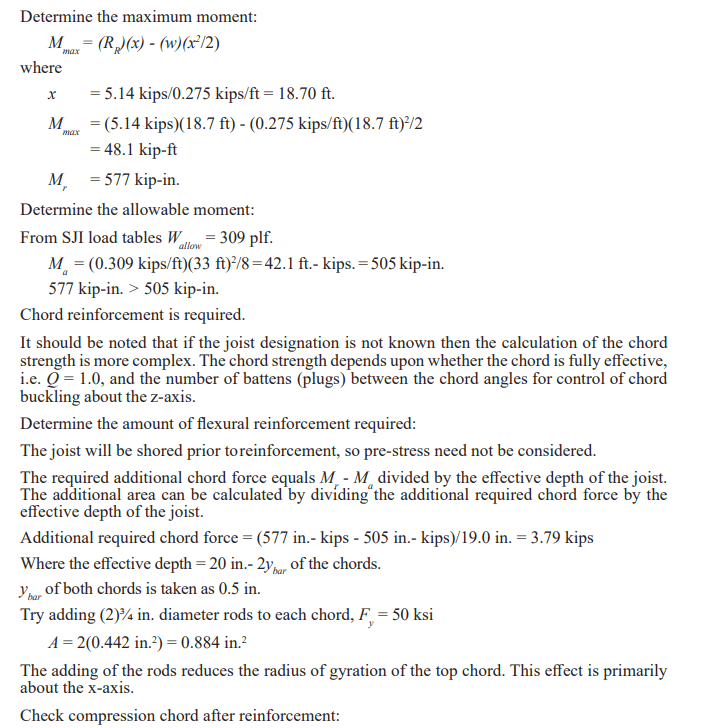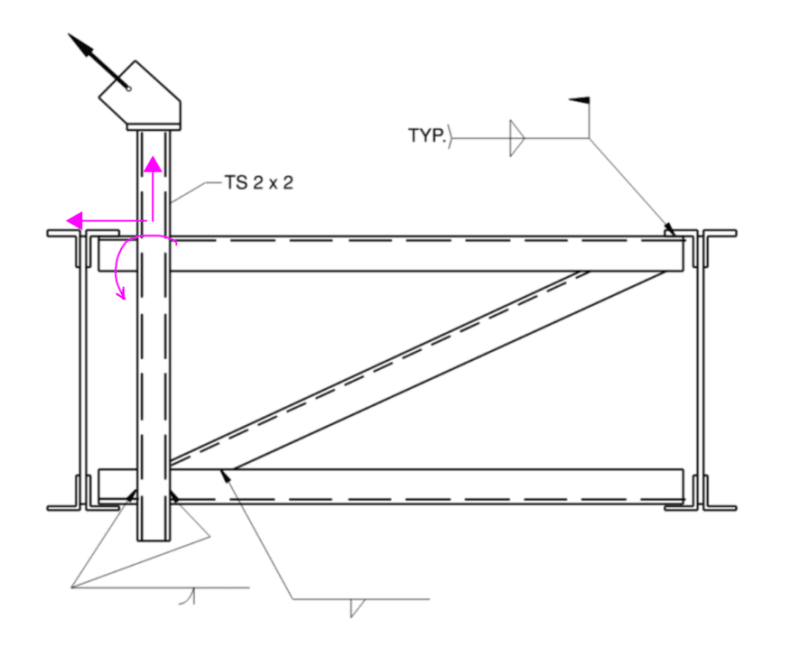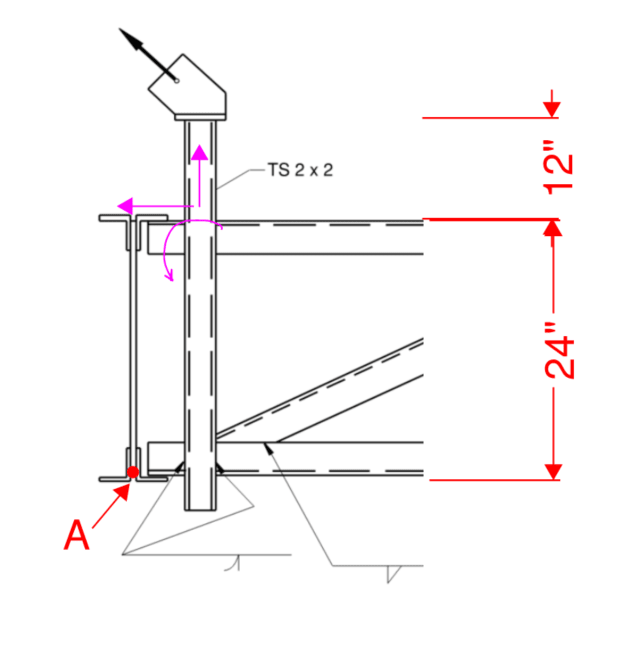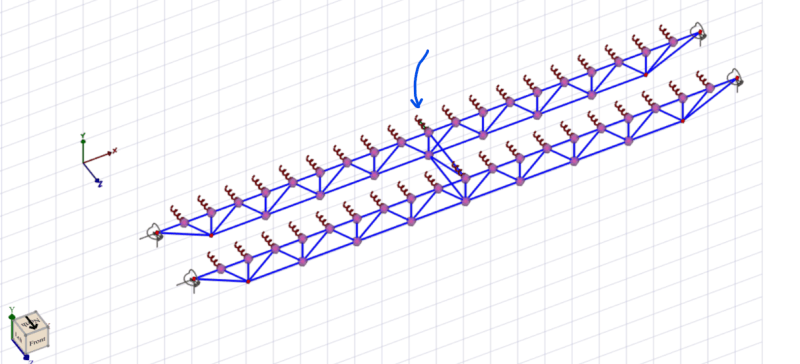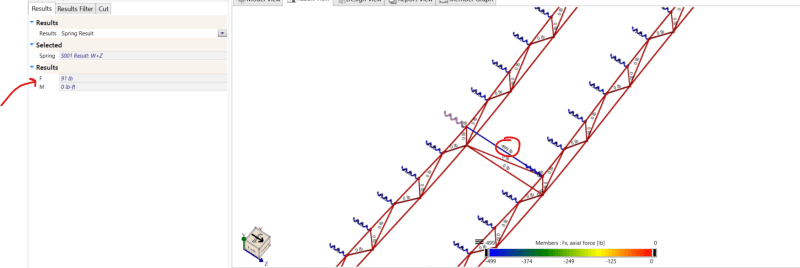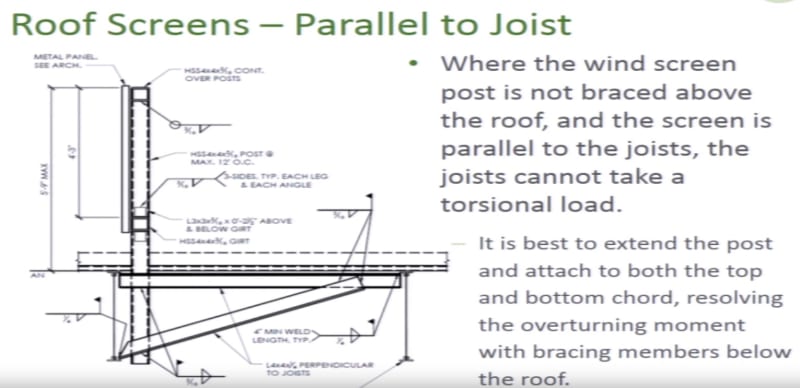Does anyone know of a good resource that walks through the process of specifying all the bridging requirements for joists?
I'm talking about the process of specifying diagonal bracing if it's needed, construction bracing, and permanent bracing. How to determine brace forces, termination connections, checking brace angle sizes, maximum joist spacing, the works...
I have Vulcraft design guides that go into detail on how certain equations derived. What I'm really looking for is summary, flow chart, or design examples that actually shows the user how to use the design tables. Both the Code of Standard practice and OSHA requirements don't give the numerical examples.
I'm also looking for the same sort of information for how to brace additional external loads placed on joists. This will help me determine the OWSJ bridging vs bracing requirements.
I'm talking about the process of specifying diagonal bracing if it's needed, construction bracing, and permanent bracing. How to determine brace forces, termination connections, checking brace angle sizes, maximum joist spacing, the works...
I have Vulcraft design guides that go into detail on how certain equations derived. What I'm really looking for is summary, flow chart, or design examples that actually shows the user how to use the design tables. Both the Code of Standard practice and OSHA requirements don't give the numerical examples.
I'm also looking for the same sort of information for how to brace additional external loads placed on joists. This will help me determine the OWSJ bridging vs bracing requirements.


